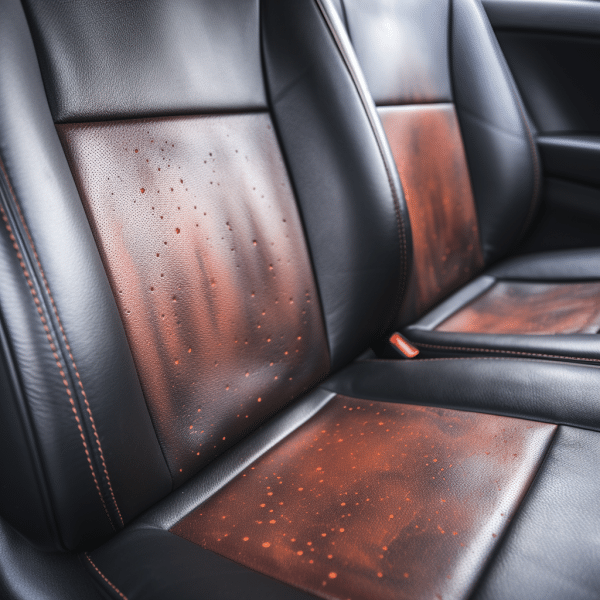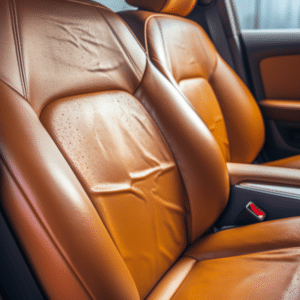
Effective Mold Removal from Leather Car Seats
Car seats are stunning, but they harbor mold quite easily. Leather warms up quickly in the sun. The perfect conditions for the growth of fungus, in this case mold, are created when heat is combined with humidity and the natural creases.
Leather vehicle seats are notoriously difficult to clean, but luckily common household items like vinegar and salt work wonders on mold. Mold remediation from leather vehicle seats is a laborious process that requires time and persistence.
What Is Mold On Leather Car Seats?

Mold is a fungal plant that grows quickly given the environmental conditions are favorable. It’s similar to the mushroom and the other fungus like the athlete’s foot. The elements that support the growths of molds include moisture, warmth, and the organic matter that they can feed on. That is why you will find molds more common on books, leather shoes, clothes, belts, and the home’s ceiling.
Only a small amount of moisture is required to spur the growth of mold in leather car seats. Leather car seats are perfect breeding grounds because of the warmth contained inside the seat for prolonged hours.
Molds are smelly, and they can make the car’s interior inhabitable. In addition, mold spores are dangerous to humans. If one inhales the spores, they cause serious allergic reactions that can lead to hospitalization. Therefore, knowing how to clean mold off the car seats is important, and it should be at the top of your priority list.
Apart from damaging the leather car seats, mold also affects the health of the passengers from its bad odor and the spores. The fact is mold spreads and grows quickly. Disinfecting and cleaning the leather seat as soon as mold is noted is essential, and it should never be ignored.
Here is how you can remove mold from the car seats:
Preparing To Clean Off Mold from the Leather Car Seats
Before removing mold of the car seats, it’s recommended that you prepare your car by following the steps below:
- Move your car to the point where it can get direct sunlight
- Open all doors and windows for proper air circulation. Do this for not less than 15 minutes for the mold spores and the bad odor to be blown away.
- Wear a particle mask to protect you from the mold spores that will be floating around.
- Inspect all corners of the leather seats. Check the seats underneath, the steering, carpet, and seat belts to know the extent to which the mold has spread. Don’t forget the side seams and the seal linings.
- When inspecting for the extent of mold spread, be sure to check on all types of molds. Mold colors can range from grey, white, brown, black, or green. You can notice them grouped into small circular patches.
- Use an old toothbrush to break down the large mold clusters. Always apply gentle strokes to avoid spreading the mold spores. Brush deep into the crevices and cracks, plus all surfaces under and over the leather seats.
- If you’ve got a wet-dry vacuum cleaner, at least utilize it to vacuum the loose mold you’ve freed from the leather seats and the carpet.
- Once you’ve completed the preparation steps, move on to the technique of cleaning off the mold from the leather seat.
How to Clean Off Mold from Leather Seats
There are a number of ways you can use to remove mold for the leather seats. However, you don’t need to jump to any chemical technique without some considerations. Not all chemicals are safe when used to clean leather. Worry less, even from your cabinet; better products are well-formulated to kill and remove mold from leather materials.
Top Method: How to Remove Mold from Leather Car Seats Using Vinegar

Vinegar is the number one leather cleaning product that is all-natural and safe. The mold cleaners can still use Non-ionized salts, but vinegar is common and easier to use. Salts might be messy because of their large particles. In most cases, it works only when applied more than once.
Vinegar is acidic, and its lower pH burns the mold and kills the spores to stop them from coming back.
What you need to clean off mold from the leather car seats:
Vinegar:
- Distilled vinegar is the best option if you have access to it.
The lint-free cloth and the spray bottle.To remove mold from leather automobile seats, use a solution of eight parts vinegar to two parts water. Apply the mixture to the mold surfaces by wiping them with a clean cloth or spraying it on with a spray bottle. Slowly, as the vinegar evaporates into the air, the foul odor will disappear.
Mold on leather furniture can be cleaned with undistilled vinegar. White vinegar is safe to use on any car seat surfaces, including leather, fabric, and vinyl. Always perform a test in a tiny, hidden area to evaluate how a chemical will react with the surface or material you will be utilizing.
From a distance of one to two feet, you can spritz or brush down the leather to remove any mold spores. A thorough cleaning will remove the spores hidden just below the surface, preventing them from spreading.
If the mold infestation is severe, spray the leather seat from top to bottom and below with a mold-killing solution.
Leather and carpets need to soak in the vinegar solution for at least 15 minutes. After that time, the vinegar’s acidity will kill any remaining mold or spores. A wet-dry vacuum is necessary for thoroughly sucking the vinegar out of the cracks and joints and ensuring that no moisture remains. Consider a scenario in which you have just finished cleaning an area but need to use the wet/dry vacuum again immediately. If you have time and a sunny spot, let it air dry.
Borax powder, left on for about 10 minutes, and then wiped off will clean the leather. Borax can be used on both hard and porous surfaces as an all-natural mold killer. Vinegar can be used as many times as necessary to completely eradicate mold from leather automobile seats.
Moist environments are ideal for mold growth, so do your best to keep your automobile dry. Mold can be eliminated with a dehumidifier once the car has dried out.
